Released: Prey as an ARPG
By gamer_152 0 Comments
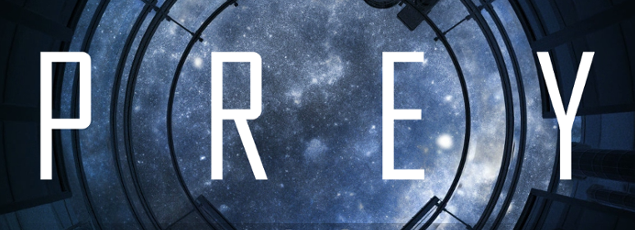
Online, fans of Prey have lent the game a nickname; it's "Bioshock in space", and if you squint, you can see it. Prey and Bioshock are both atmospheric first-person action games which include a mostly abandoned environment full of art deco visual design but also reminders of the rigorous engineering done to keep them safe from the hostile nothing beyond their bulkheads. Their settings are both idealistic capitalist projects that boiled over into chaos and where Bioshock 2 had walks on the ocean floor, Prey has spacewalks. In both cases, your default weapon is a wrench, you can unlock doors with secret codes, and you upgrade your character using god-like technology. But to me, planning how to overcome a challenge or experiencing the story in Prey feels nothing like it does in Irrational's underwater pseudo-horror. For me, this wasn't a Bioshock in space as much as it was Deus Ex in space.
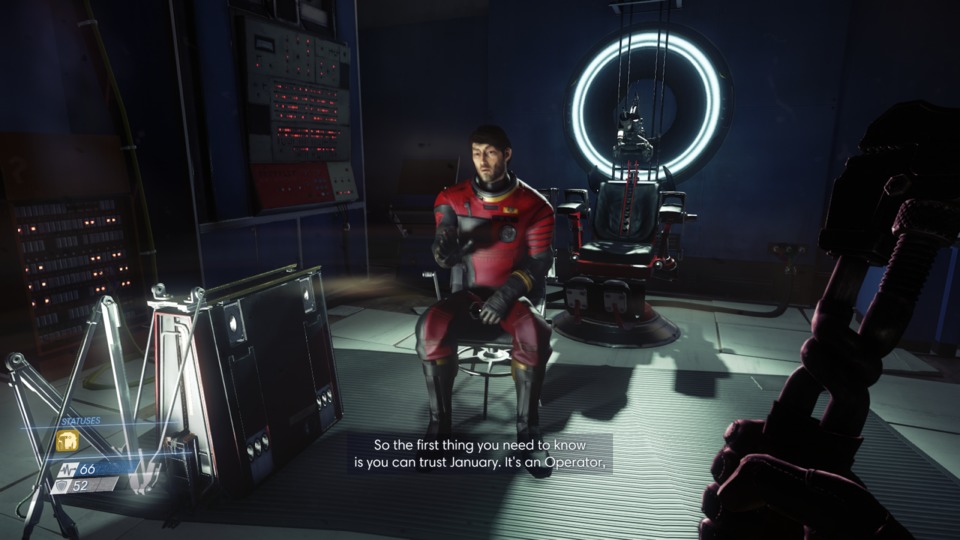
Both Prey and the recent Deus Exes are near-future sci-fis with protagonists who hold a senior position in a company which manufactures augmentation technology. In both cases, that technology is embroiled in controversy and has the potential to dehumanise users, as we see through the protagonist, but the use of those electronics also allows the player to access an upgrade tree. The upgrades in both of these games frequently afford the audience more options in how they surpass obstacles, with levels designed so that the player can complete them using a variety of different approaches from brute firepower to stealth. In both games, you also store the physical tools used for this purpose in a grid-based inventory. I want you to imagine taking an augment upgrade which allows you to lift heavy objects and picking up a filing cabinet so you can sneak through a vent behind it. You then use another character upgrade to hack into a PC, steal a door access code from an email on the computer, leave the room, and enter that access code on a door down the hall. The scene I've just described is equally likely to happen in Deus Ex as it is in Prey.
Arkane Studios do, however, situate Prey in a more seamless setting than you'll find in the last two Deus Ex RPGs. Deus Ex: Human Revolution, for example, has virtually all of its levels branch off two main hubs: Detroit in the U.S. and Hengsha in China. At a pivotal moment in the plot, the player flies from Detroit to Hengsha, and then later flies back. This jet-setting between two geographically and culturally distant territories helps convey that the events of Human Revolution are taking place on a global scale. Prey, on the other hand, is a game going for the opposite. It wants to create the sense of a smaller, self-contained location to let you know that you are trapped on the station with its aliens with no immediate exit; hence the station's original name of "Kletka", Russian for "Cage". Talos I is also somewhere that you should know like the back of your hand so you can confidently backtrack through it in later missions, and because, as Morgan, it is meant to be your home and workplace. The game makes sure that you comprehend the isolation of the station and how it fits together through four means:
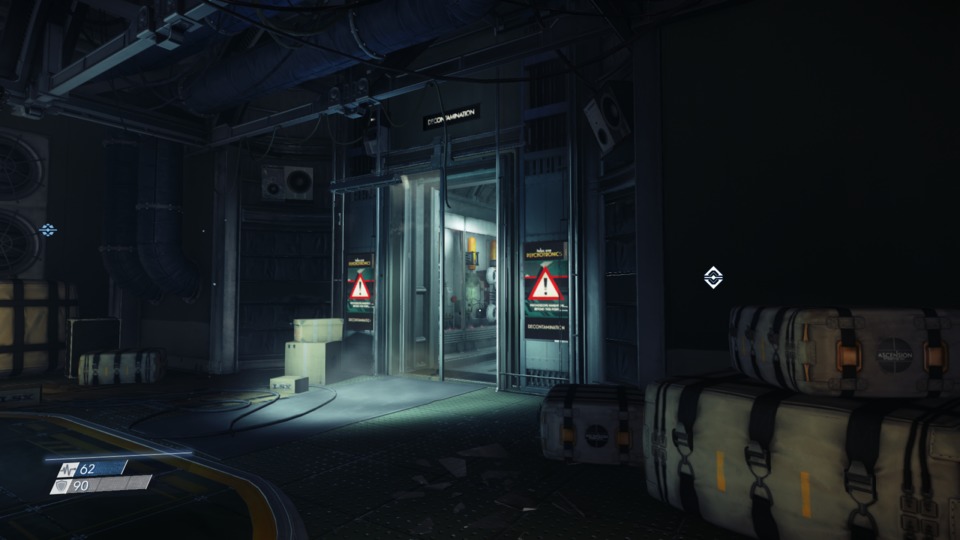
1. Backtracking helps you rehearse the layout of Talos's offices, labs, and bays. I'd even argue there's a little too much backtracking by the time the action closes out. But there wouldn't be nearly as much of it, nor would it help you memorise the layout of the station, if Prey, like most other open-world AAA games, used a fast-travel system. Fast-travel degrades the sense of a physical geography for a world; any area can be accessed from any other, and so the player has a limited awareness of how one zone leads on from another, and they do not experience moving through the world in the same way that the average occupant of the world does.
2. Prey contains a diagram which shows you which areas of its environment route into which other areas. Because you often need to pass through one or more sectors of the ship on the way to your destination, you are encouraged to study this diagram.
3. Signs in the environment regularly spell out the way to certain locations, a touch that would not be possible without Prey being set somewhere diegetically designed by and for people.
4. You can, and at various points, must, spacewalk around the outside of the ship. In architecture, the exteriors of buildings typically and often intentionally obscure the interiors. From the inside, you may see a kitchen, but from the outside, an observer only sees a house. Or maybe you're in a conference room, but an onlooker outside only sees another part of an office block. What's abnormal about observing Talos I from the outside is that through labelling and other design elements of the station, the exterior often informs you what interior section of the building you're looking at. This is reinforced through labels in the GUI. It is necessary that the chassis of the ship is labelled in this forthcoming fashion because that option to navigate around the outside would otherwise mean that you could travel from A to B without seeing how the modules of the ship link together.

It's also important to understand that the choice to either backtrack through the station or fly around it is not just a choice of which avenue you to take to your destination but also a choice of what type of movement you want to employ. Heading through the ship's interior means travelling by-foot and sometimes with your jetpack, while journeying around its exterior means piloting in 3D, controlling your speed with thrusters and brakes. The variation in movement is a bid to keep you engaged in your navigation. You'll also notice that to spacewalk into and out of an area you must first activate its airlock. Through this limitation, the game ensures that you understand the composition of Talos I's interior before you move outside it.
_____
Drifting around Talos I's carapace lets you see it as a broken, buckling ship stranded in the void, tens of thousands of miles from help. It nails the tone that Prey is after. While the navigational differences between Deus Ex and Prey are structural and big-picture, they do part ways in a more fundamental aspect: In Prey, you're more mobile than you ever were in Deus Ex. You get a higher-speed sprint with a long stamina meter behind it, you get a jetpack which lets you make long falls unharmed, and Arkane often builds levels with more verticality. You get a jump and eventually a double-jump, and Prey's control sticks are never cemented to stiff movement as they are in the cover and aiming systems of Human Revolution and Mankind Divided. This makes it so that skirting around enemies or running to avoid them is a workable strategy which instils the feelings of panic that Prey would like its enemies to inspire. The increased mobility also makes platforming a suitable solution for scaling areas, especially when enabled by the GLOO Cannon.
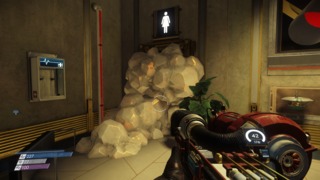
The GLOO Cannon is a gun which shoots blobs of white gunk that harden into a solid. Think futuristic Polyfilla. It's the kind of tool every designer should be aspiring to come up with. One of the goals of designers (whether they're working in games or other fields) is to provide the most functionality possible from the fewest design elements possible. Take, for example, context-sensitive inputs. Early video games only had as many player actions as there were buttons on the controller or cabinet. If you were designing a shooter in the olden days, you might decide the Right Trigger shot, the X Button jumped, the Square Button reloaded, and so on. In modern game design, however, you might decide that while the Square Button reloads by default, if the player is facing a heavy object, the Square Button lifts it; if they are facing a light object, it places it in their inventory; if they are facing a computer screen, it clicks on it, and so on. The functions of the button are now contextual, and suddenly, a design element that previously had one application now has four times that. This allows for a more expanded palette of player verbs and thus potentially deeper play.
The GLOO Cannon is the only example I can recall of a contextual gun. Point it at an enemy and it will immobilise them, fire it at a Crystoid and they will explode, point it at a fire and it will extinguish it, point it at an electrical junction and it will temporarily stop sparking, point it at a doorway and you can create a barrier to block off enemies, or point it at a wall and you can create platforms with it. Greater versatility in a user's tools means more ways they can apply those tools and the GLOO Cannon has virtually unparalleled versatility. Its power to create new platforms, in particular, reminds me of Portal's Portal Device.
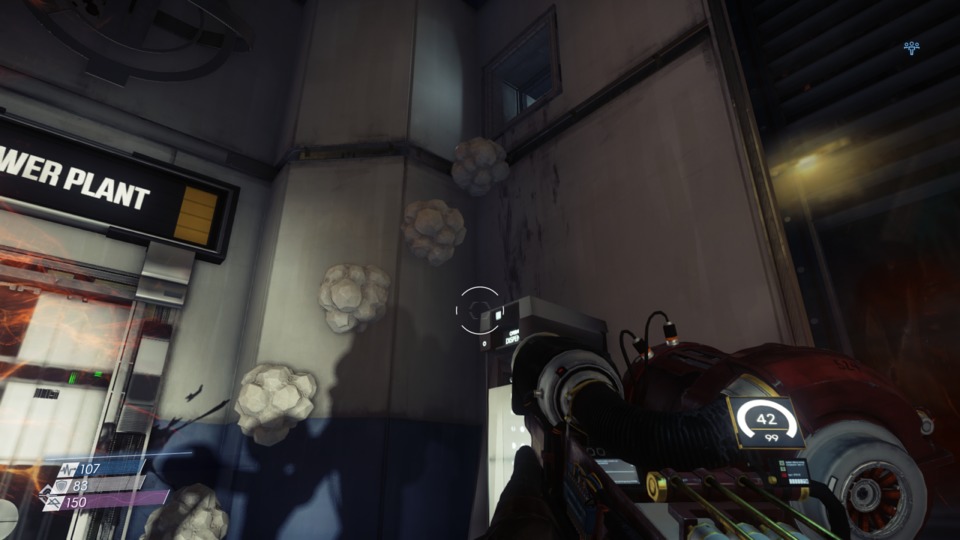
Something peculiar happened in the years following Portal's release. Valve's first-person puzzler was the talk of the town, and developers pinched plenty of aesthetic and mechanical elements from it, but no one wanted its central mechanic in their game, that mechanic of the Portal Gun. It was likely because the effective teleportation that the Portal Device grants would act as a way to skip past the enemies, obstacles, and puzzles of most games. Portal is only able to contain its raw possibility because the whole environment in Portal is designed around a careful permissiveness and restriction of the use of its gateways. The GLOO Cannon, unlike the Portal Gun, is not the power to punch holes through a level, but it does carry on the spirit of the Portal Gun. It asks the player to warp the existing features of the spaces the game places them in to create new routes through them; it even uses similar sound design to Valve's gun. With the Dishonored series, Arkane proved their dedication to letting players choose between existing passages through levels, but with Prey's GLOO Cannon, they prove their dedication to letting the player carve new passages. The gun's power is balanced by the limited cache of ammo you have for it; ammo that you can't use willy-nilly for creating platforms because you need to conserve it for other purposes.
There are other weapons in Prey which are also multifunctional. The Huntress Boltcaster can be used to pop Crystoids, hit buttons from afar, or attract attention from enemies; the EMP Charge can be used to disable junction boxes, shut down turrets, or rob Voltaic Phantoms of their electrical powers; and the Typhon Lure can be used to tempt enemies towards environmental hazards or to keep them off your back while you sneak through a room. These tools are all in line with an idiosyncrasy in Prey where it gives us only three weapons which directly do damage but far more ways to solve problems non-lethally, and this encourages us to mix up the abilities we use in fights. Rather than just hitting a Weaver with our shotgun, we might hit them with a Nullwave Transmitter and then shotgun them to death. Rather than just trying to pick off Phantoms with the pistol, we might freeze them with the GLOO Cannon before reaching for our 9mm. You'll also find that many Neuromod upgrades have that swiss army knife quality. The Mimic ability can be used to hide from enemies or slip through tiny gaps; increased stamina can be used to better run from enemies or get more hits on them with the wrench.
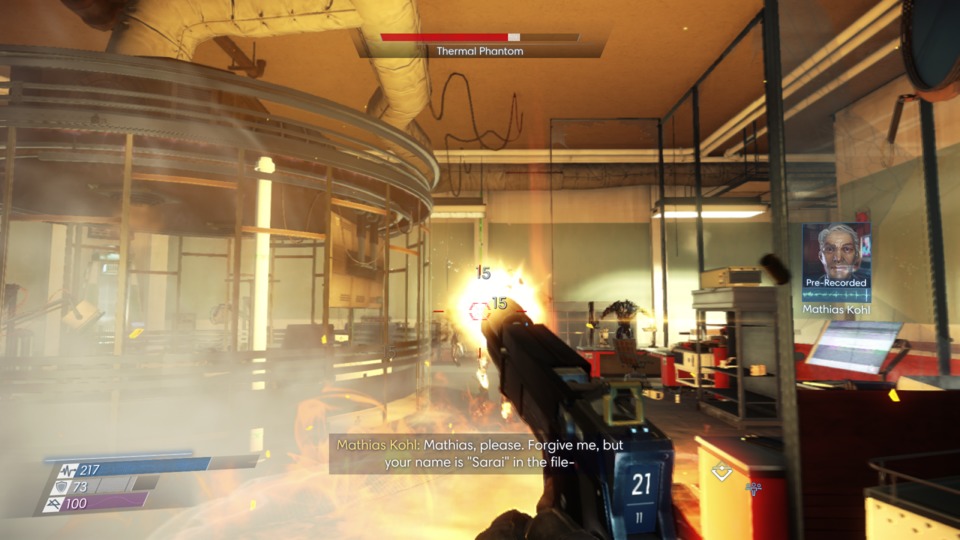
As for those lethal weapons, the shotgun does make the wrench obsolete in many combat encounters, but the designers also don't make the blunder that often limits the agency of the audience in AAA shooters. There are many single-player FPSs which start their player off with a low-damage, low-range melee weapon and make the second weapon they come across a pistol with comparable or better damage and a medium-long range. When the player receives their handgun, the designer appears to have expanded their options in combat by giving them two weapons where they previously had one, but when the pistol is objectively more effective than the melee weapon, the player still only ends up using a single tool in combat.
Some more self-aware games limit pistol ammo, forcing the player to switch back to the melee weapon now and then. This is better but is not all that strategically deep, and may make the player feel like they are being pummeled into using a frustratingly limp weapon as opposed to two weapons that carry weight with them. Prey follows this pattern of making your first weapon a melee one and your second weapon a handgun, but not only does its pistol have multiple advantages over its wrench; its wrench has multiple advantages over its pistol. The pistol fires faster, lets you put distance between you and your targets and doesn't use stamina, while the wrench doesn't use ammo, has a chance of knocking down enemies, and does more damage than the pistol (more than double in some cases). So even in the early play, you have more than one viable option in how you attack, and you get to think about using the right tool for the right job.
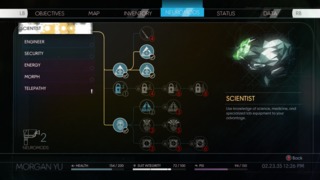
Again, you can see the intention to have as few design elements as possible act with the maximum variety of functions possible. Prey is miles above most games on the market when it comes to the ratio of its player abilities to how much can be done with those abilities. Arkane could have made "Run faster" or "More wrench hits" into discrete upgrades; they also could have given us separate guns to immobilise enemies and to create platforms. However, by embodying multiple powers in single skills or individual weapons, it makes it so that every new Neuromod installed and every new tool collected opens up numerous new abilities for us instead of just one more. That is not a quality unique to Prey, but it is one that is surprisingly uncommon in today's AAA action games.
Even the crafting system is about giving players more of a say in how the game is played. I don't begrudge anyone who looks at these mechanics and feels pangs of crafting fatigue, but I'd also argue that this system amplifies Prey's strengths and that the game has fresh ways of realising crafting simulation. Many of the games where crafting feels at home are those games where the world is so worn down that DIY is a necessity. And sure, the situation aboard the Talos I is desperate, but the Recycler and Fabricator machines which make crafting possible feel like they exist not because of a lack of resources in 2035, but as more of a luxury. Just as the United Federation in Star Trek has their Replicator, so the TranStar Corporation have their Fabricator: Any tool you need is at your fingertips, you just need to supply the raw materials.
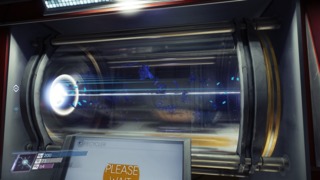
Most video games don't animate the physical process of the crafting, and they make sure even highly ambitious hardware projects can be carried out in a split-second. We excuse this because we know realistic crafting would be highly complex to animate, and we don't take the instant generation of items literally; we know this is a narrative contrivance to avoid us sitting around for a few hours while a character bolts armour together. However, in Prey, you do get to see the crafting process, and it only takes a few seconds canonically. This is because the Recycler can synthesise junk into usable material and the Fabricator can assemble usable material into items, and both do it almost instantaneously. So you feel like you're witnessing technological miracles and that the crafting is depicted more realistically. The system also serves as a way to remind you of the dubious and dangerous way in which TranStar manufacture Neuromods. Crafting more Neuromods requires Exotic Material which you can only get by killing Typhon and processing their organs.
Where the crafting system supports the broader dynamics of the game, it does so by giving you a choice of which tools you use to tackle coming challenges. Different playstyles require different items: You may want to craft more Neuromods to get more Typhon powers, or maybe you want to craft more pistol rounds because you like to let your bullets do the talking. Whatever your preference, you get the items you want as opposed to the game thrusting items upon you. The designers could, of course, furnish you with all the equipment to complete challenges any way you wish, but instead, you're given limited access to tools and must decide the few you take with you. Through this, the game forces you to make a statement about your playstyle and completing missions feels more like the result of your own work.
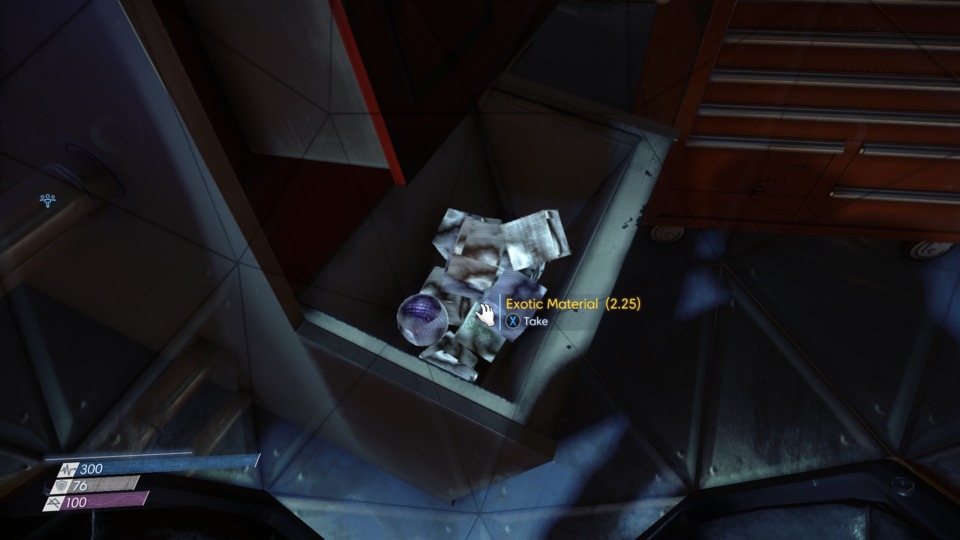
Of course, as much agency as you may want a crafting system to give a player, that means nothing if it involves so much micromanagement that the player doesn't want anything to do with it. In some games, it's not immediately apparent to players which resources they can process into which goods. For example, in Fallout 4, there are thirty-one different crafting materials, all of which can be salvaged from objects found around the world. With so many items and so many different materials each item can break down into, it's rarely clear what objects you can salvage for what resource and how much of that resource they will yield. It's common to end up in a scenario where you know an object contains metal, but don't know which metal it is when the game distinguishes between six different compositions of metal. And just by looking, could you always tell the difference between items made out of plastic, fibreglass, or glass? You almost never have to make these kinds of guesses in Prey as the game has everything in your inventory break down into four types of matter, meaning you can reliably guess which items will drop what crafting materials through basic knowledge of real-world objects.
You know if your source item is food or plant clippings it will break down into Organic Material, anything metal or wooden will produce Mineral Material, if it's a non-metallic humanmade substance like plastic or rubber it can be recycled into Synthetic Material, and any Typhon body parts become Exotic Material. Clear communication with the player means they can make snap judgements about what to pick up and that the pacing does not suffer, nor is the player burdened with menu housekeeping as they rummage through their stock to work out which objects translate to which resources. It also helps that, in Prey, hovering the cursor over an item in your possession gives a readout of how much of each material it will produce.
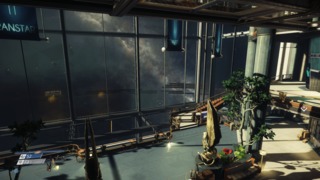
What I'd most like players to take away from Prey's design is that developers can best inflate the possibility space and sense of agency in a game not by giving us many tools but by ensuring we can use each tool in many ways. Give a player an object or an upgrade with a single intended purpose, and you've already told the player how to play. It creates a constraining atmosphere where beating puzzles and enemies becomes one-dimensional pattern recognition. Give them an object or ability that can be used in many ways, however, and you've given the player the power to get creative with it. In its weapons, Neuromods, and crafting system, Prey shows this principle in action. Thanks for reading.